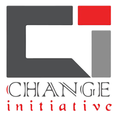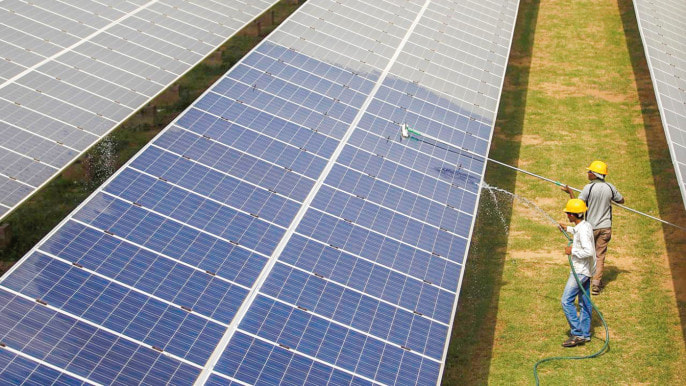|
Recent policy shift in Bangladesh promoting ‘clean energy’ over ‘renewable energy’ has been an impediment to adopting nature-based sustainable solutions for a secure and sustainable future. At COP28, leaders of 123 nations, including Bangladesh, promised to double the global average annual rate of energy efficiency improvements from about 2% to over 4% by 2030 under the Global Renewables and Energy Efficiency Pledge (GREEP). They also committed to prioritising energy efficiency as the "first fuel" in policy, planning, and major investment decisions. The Mujib Climate Prosperity Plan (MCCP) aims to achieve 30% power from renewable energy by 2030 and 40% by 2041. Bangladesh has planned a total of 4,095 MW of renewable energy generation by October 2027, primarily showing an upward trend. However, it only achieved 4.61% by October 2023, according to research by the Change Initiative. Concerns have thus intensified about the real willingness of the government while a drastic deviation is observed in fixing long term targets. But the global cost of renewable energy generation has been going down significantly. The newly developed Integrated Energy and Power Sector Master Plan (IEPMP) 2023 has proposed the contribution of renewable energy to only 2.8% and 4.4% by 2041 and 2050, respectively. As of 2022, the renewable power deployed globally since 2000 saved an estimated $521 billion in fuel costs in the global electricity sector alone and $199 billion in Asia as well (IRENA, 2023). Moreover, the plan has set the overall contribution of renewable energy in the power generation mix at only 11% (solar 5% and wind 6%) on net-zero scenario (NZS) and 8% (solar 3% and wind 5%) on Advance Technology Scenario (ATS). This estimate contradicts the target of the Paris Agreement, the Mujib Climate Prosperity Plan, Renewable Energy Policy, and most importantly, the commitment of the Prime Minister to supply 40% of electricity from renewable sources by 2041. While the Mujib Climate Prosperity Plan sets excessively ambitious goals, the Integrated Energy and Power Master Plan of 2023 fails to adequately represent the government's commitment to renewable energy. This approach will intensify the risks for the BPDB to go bankrupt. On the other hand, an evaluation report of the IMED revealed in 2023 that the government has paid Tk 90,000 crore as capacity payment from the 2009-2022 period, which is a 'creative distortive fees' instead of the global practice of holding charges. The Mujib Climate Prosperity Plan (MCCP) 2021 set ambitious private sector finance targets for the renewable energy transition, but the flow of REF is currently much below the required amount. However, the IEPMP 2023 would discourage the national and international flow of investment to renewable energy that gained momentum in 2023. Over the past 13 years (2010-2023), foreign investment of approximately $30billion has flowed into Bangladesh energy sector, however the investments have predominantly been in fossil fuels. Approximately $26.5 billion would be spent over the course of the next 15 years or by 2040 if the energy mix was composed of 15% from wind, 30% from NMS solar, and 55% from IPP solar (Change Initiative, 2023). For around 30 renewable energy projects, the total investment is around $1,374 million, and the private sector is a significant contributor, investing around $850 million (62%) of the total investment. Bangladesh ranked seventh in the global climate risk index in 2021. And emissions in the country had risen 59% from 1990 to 2012, with a rate of 2% increase per year. Fossil fuels are the biggest contributors to climate change, with two-thirds of global greenhouse gas emissions linked to burning them for energy. However, these investments still do not cover the target mentioned in previous policies. An estimate by the Change Initiative shows that in Bangladesh, roughly $5 billion-$9 billion in investments will be needed alone for Bangladesh by 2030 to develop the required installed capacity from renewable energy sources. In this context, Bangladesh secured €400 million recently in funding from the European Investment Bank (EIB) and the European Union (EU) for its renewable energy generation and capacity building. Funding includes a €350 million EIB loan, a €45 million EU investment, and a €5 million grant to install 750 MW of renewable energy capacity, supporting Bangladesh's green transition and climate mitigation goals. Bangladesh also recently reached an agreement with IMF Bangladesh's economic policies with a 42-month arrangement of about $3.2 billion with $1.3 from the Resilience and Sustainability Facility (RSF). Both the funds from the IMF-RSF and EIB in renewable energy should be utilised to leverage the fund to meet the conditional targets for mitigation in the NDC and the risks arising from longer-term structural challenges. How the fund related discussion would be inclusive and transparent needs to be examined. The RSF led the Climate and Development Partnership (BCDP) and EIB funding related decisions particularly for the RE projects should be inclusive, transparent, and competitive bidding process with the equal opportunities for all qualified national and international renewable energy generators. Usually, the business models that are globally followed for solar energy and other renewable energy models include both Capital expenditure (Capex) and Open expenditure (Opex). In Bangladesh, the Opex model is the most widely used which allows the buying of electricity from the authorising company at a fixed rate known as tariff rate. However, despite the global weighted average cost of electricity from solar PV, onshore wind, bioenergy and geothermal, private projects of renewable energy are charging a higher tariff for power purchase, specifically at a rate of $0.13/KWh. In contrast, public projects are offering the lowest tariff rate ($0.10/KWh). Additionally, joint venture renewable energy projects are charging tariffs higher than those of public projects, indicating variation in pricing strategies across different owners. It seems that for unsolicited as well as largest projects the tariff rates are comparatively higher. Moreover, private projects in Bangladesh exhibit varying tariff rates based on their capacity of power generation. For projects with a capacity ranging from 1-50 MW, the average tariff rate is $0.13/KWh. Interestingly, projects with a capacity between 51MW and 100 MW tend to have a lower tariff rate ($0.11/KWh) than the 1-50 MW range. However, for projects with a capacity of 151-200 MW, the average tariff rate increases to $0.15/KWh. Only 16.48% with a capacity of 406.25 MW are solicited; and the majority, accounting for 83.17% with a capacity of 2,139.29 MW, are unsolicited projects. Unsolicited projects lead to higher overall tariff rate in renewable energy projects. The major problem persists in terms of fixation of tariff rates and alignment with any well accountable policy. It opens the scope of confusion and debate and comparison of tariff rates among Independent Power Producers (IPPs) of similar characteristics show differentiated tariff rates in the country. Considering land prices, the tariff rates for solar parks or IPPs can be higher than small scale solar projects. However, the tariff rates for some rooftop solar are seen to be significantly higher than what should be. Earlier the High Court ordered that Bangladesh Energy Regulatory Commission (BERC) is the organisation for settling all the disputes between two parties – licence holders and consumers. Moreover, due to not adopting the different market-based tariff rate determination e.g. Feed-in-tariff, auction prices have created space for rent seeking. This situation poses serious questions about the integrity and transparency in tariff rate determination. Therefore, all agencies concerned should follow the mandates of BERC on tariff set-up. Moreover, due to not adopting the different market-based tariff rate determination e.g. Feed-in-tariff, auction prices have created space for rent seeking. This situation poses serious questions about the integrity and transparency in tariff rate determination. Therefore, all agencies concerned should follow the mandates of BERC on tariff set-up. Adhocism and utmost reliance on the foreign money for developing the energy and power sector planning led to undermine the RE. Moreover, absence of evidence or survey based RE mapping or zoning across the country to specify the potential locations for solar and wind energy generations. In this context, a renewable energy finance strategy should develop soonest to utilise the real potential of global uptakes of the RE. A feasible and firmed enabling environment along with the optimal incentives (e.g. leasing Khash land at a reduced rate, transmission supports, tax rebates on both imports of inputs and corporate incomes etc.) requirements for foreign investment. Inadequate grid management practices and lack of attention to grid flexibility; organising RoW for construction of transmission infrastructure for power evacuation. Inadequate capacity of Load dispatch centre, grid outage happens at 33 kV level etc. Usually, the social costs and economic benefits of RE are undermined, prioritising financial benefit of fossil fuel-based energy generation and unavailability of low-cost capital from local banks and inadequate sovereign guarantees, limited disbursement of sustainable finance e.g. Bangladesh Bank. Except IPPs, 27% and 38% import duties applicable for solar PV panel and solar PV inverters respectively. Not-to-focus on environmental sustainability rather focus on vested interests e.g. approval of the draft RE Roadmap is a grave challenge. Absence of a standard PPA for renewable energy leads to non-transparent and unpredictable selection; less empowerment of SREDA and inadequate role of MoPEM in promoting renewable energy and renewable energy finance and lengthy approval process (a long list of different permits) led to higher costs for both CAPEX and OPEX model of renewable energy generation. In this context, the following way out will not only reduce the fiscal burdens of the government but also create room for secured and sustainable green energy:
Recent policy shift in Bangladesh promoting "Clean Energy" over "Renewable Energy" has been an impediment to attain Bangladesh to enjoy the nature-based sustainable solutions towards secure and sustainable futures, key to climate justice. Instead of shifting focus towards these unproven sources, prioritising clean energy over proven renewable energy could create an unprecedented burden for Bangladesh in terms of safety, security, affordability, access to resources, and energy scarcity.
Published first at: Renewable energy: A nature-based sustainable solution for Smart Bangladesh | The Business Standard (tbsnews.net)
0 Comments
Your comment will be posted after it is approved.
Leave a Reply. |


